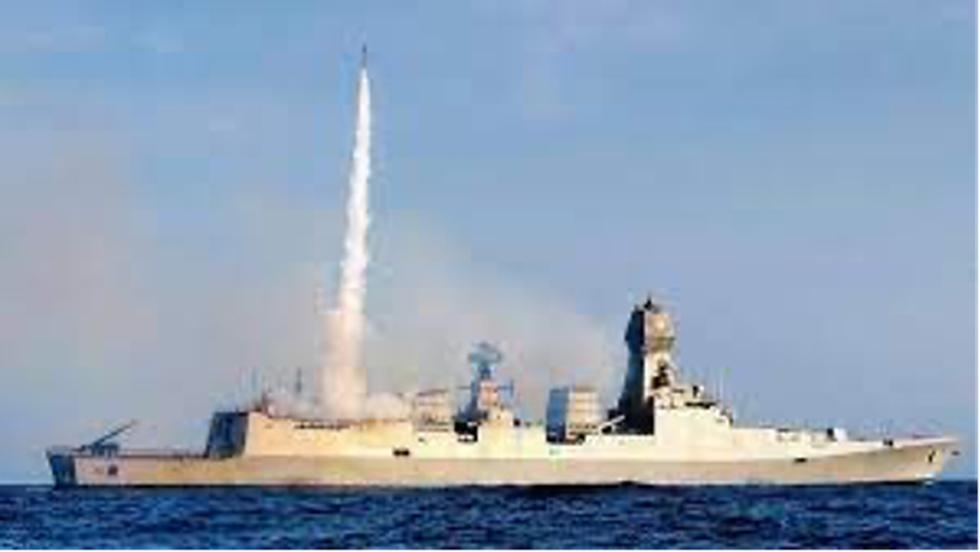
Why in news?
- India entered an elite club of nations with the capability to fire a Ballistic Missile Defense (BMD) interceptor from a naval platform.
- Prior to this, DRDO has successfully demonstrated land-based ballistic missile defence system with capability to neutralize ballistic missile threats, emerging from adversaries.
India’s Ballistic Missile Defence Programme:
- India launched the BMD program after Kargil war in 1999 to counter the enemy nation’s widening spectrum of ballistic missiles that usually delivered both conventional and nuclear warheads.
Two-tires of BMD system
- Prithvi Air Defence missile
- It was originally tested in 2006 and is capable of intercepting and destroying missiles at exo-atmospheric altitudes ranging from 50 to 180 kilometres.
- The Pradyumna interceptor has already replaced the Prithvi Air Defence BMD.
- Exo-atmospheric missiles are capable of completing missions in the Earth's upper atmosphere.
- Advanced Air Defence Missile
- The second layer is Advanced Air Defence (AAD) Missile for lower altitude interception.
- It was first tested in 2007 and designed to knock down hostile missiles in the endo-atmosphere at altitudes of 15-40 KM.
- The endo-atmospheric missiles are the ones that operate within the earth's atmosphere that covers an altitude below 100 KM.

About Pradhan Mantri Urja Ganga Project:
- The project is also known as Jagdishpur – Haldia & Bokaro – Dhamra Pipeline Project (JHBDPL) project.
- It was launched in 2016 and will cater to the energy requirements of five states namely Uttar Pradesh, Bihar, Jharkhand, Odisha and West Bengal.
- This pipeline will connect six districts in Bihar to the National Gas Grid. The project will provide access to clean natural gas for industries, CNG for vehicles and PNG for homes, promoting a sustainable lifestyle.
- Total length of pipeline under Pradhan Mantri Urja Ganga Project is 3,384 km, out of which 766 km of pipeline is in Odisha state and the balance 2,618 km is in the states of Uttar Pradesh, Bihar, Jharkhand, West Bengal & Assam.
- The seven main station cities include Varanasi, Patna, Bokaro, Jamshedpur, Kolkata, Ranchi, Bhubaneswar and Cuttack as the major beneficiaries of the project.
- The project is being implemented by GAIL.

Why in News?
- On the occasion of National Panchayati Raj Day and marking 30 years of Panchayati Raj in India, Prime Minister will inaugurate an integrated e-Gram Swaraj and GeM portal for public procurement at the Panchayat level in Rewa, Madhya Pradesh.
The Objective of Integration:
- The objective of e-Gram Swaraj–GeM Integration is to enable the Panchayats to procure their goods and services through GeM leveraging the e-Gram Swaraj platform.
- It will help the entire buyer-seller ecosystem to flourish thereby giving a major boost to rural economy and entrepreneurship along with strengthening the Digital India Program.
- Salient features:
- Existing User base of GeM of nearly 60,000 is envisioned to increase to more than 3 lakhs in a phased manner.
- Bringing transparency in procurement by Panchayats by making the process digital.
- Encouragement of local vendors (Proprietors, Self Help groups, Cooperatives etc.) to register on GeM as Panchayats procure largely from such vendors.
- Panchayats will have access to doorstep delivery of quality-assured goods at standardized and competitive rates.
- Major Capacity building being taken by The Ministry of Panchayati Raj and GeM has also trained and appointed business facilitators in all States for handholding of the Panchayat users.
E- Gram Swaraj platform:
- The e-Gram Swaraj platform was launched on National Panchayati Raj Day in 2020.
- It was designed to operate as a single window solution for all day-to-day functioning of the Panchayats from Planning to Online Payments.
4. What is Charles Darwin’s Theory of Evolution?

About Charles Darwin’s Theory of Evolution:
- Darwin in his Theory of Evolution describes how organisms evolve over generations through the inheritance of physical or behavioral traits.
- The mechanism that Darwin proposed for evolution is natural selection.
- How Natural Selection Happens?
- Individuals with traits that enable them to adapt to their environments will help them survive and have more offspring, which will inherit those traits.
- Individuals with less adaptive traits will less frequently survive to pass them on.
- Over time, the traits that enable species to survive and reproduce will become more frequent in the population and the population will change, or evolve.
- Natural selection depends on the environment and requires existing heritable variation in a group.
- Through natural selection, Darwin suggested, genetically diverse species could arise from a common ancestor.
5. What are Aptamers?

About Aptamers:
- They are short, single-stranded DNA or RNA (ssDNA or ssRNA) molecules that can selectively bind to a specific target, including proteins, peptides, carbohydrates, small molecules, toxins, and even live cells.
- Aptamers assume a variety of shapes due to their tendency to form helices and single-stranded loops.
- They can be used as an antibody alternative in a variety of therapeutic, diagnostic, and target-binding applications.
- They can also be readily conjugated to gold nanoparticles or quantum dots as a basis for point-of-care diagnostics.
- Aptamers have been successfully used for the diagnosis and therapy of a broad spectrum of pathogens including bacteria, parasites, and viruses.
What is a Biomarker?
- It is a biological molecule found in blood, other body fluids, or tissues that is a sign of a normal or abnormal process, or of a condition or disease.
- A biomarker may be used to see how well the body responds to a treatment for a disease or condition.
6. What is CARICOM?

About CARICOM:
- CARICOM, which stands for Caribbean Community, is the oldest surviving integration movement in the developing world.
- It is an organization of Caribbean countries and dependencies originally established as the Caribbean Community and Commons Market in 1973 by the Treaty of Chaguaramas.
- Main Purposes:
- Promote economic integration and cooperation among its members;
- To ensure that the benefits of integration are equitably shared;
- To coordinate foreign policy;
- Members:
- It has 15 members; Antigua and Barbuda, The Bahamas, Barbados, Belize, Dominica, Grenada, Guyana, Haiti, Jamaica, Montserrat, Saint Kitts and Nevis, Saint Lucia, Saint Vincent and the Grenadines, Suriname, and Trinidad and Tobago.
- Anguilla, Bermuda, the British Virgin Islands, the Cayman Islands, and the Turks and Caicos Islands have associate member status, and Aruba, Colombia, the Dominican Republic, Mexico, Puerto Rico, and Venezuela maintain observer status.
- The Chairmanship of the Community is rotated every six months among the member countries' Heads.
- Secretariat: The CARICOM Secretariat in Georgetown, Guyana, is the principal administrative organ of the Community and is headed by a Secretary General who is the Chief Executive Officer of the Community.
- In 2007, CARICOM officially inaugurated the Caribbean Court of Justice (CCJ), which serves as the final court of appeal for CARICOM members and also handles regional trade disputes.
7. Logistics Performance Index (LPI) 2023
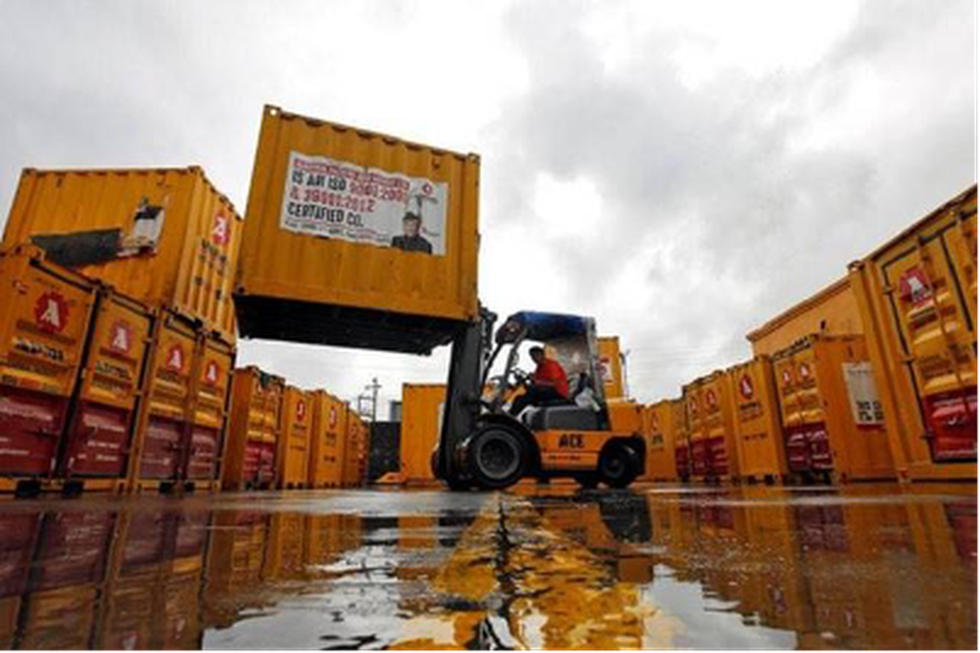
About Logistics Performance Index (LPI):
- It is released by World Bank.
- It is an interactive benchmarking tool created to help countries identify the challenges and opportunities they face in their performance on trade logistics and what they can do to improve their performance.
- It measures the ease of establishing reliable supply chain connections and structural factors that make it possible, such as the quality of logistics services, trade and transport-related infrastructure, as well as border controls.
- Highlights of LPI 2023:
- The LPI 2023 allows for comparisons across 139 countries.
- The LPI 2023, for the first time, measures the speed of trade with indicators derived from big datasets tracking shipments.
- Singapore and Finland are the most efficient and highest-ranked LPI countries as per the 2023 LPI.
- India is ranked 38 out of 139 countries, climbing six places from the previous index.
- Two major factors for India's jump in the index could be modernisation and digitalisation, which the report quotes as a reason for emerging economies like India to leapfrog advanced countries
8. Where is Pindari Glacier?
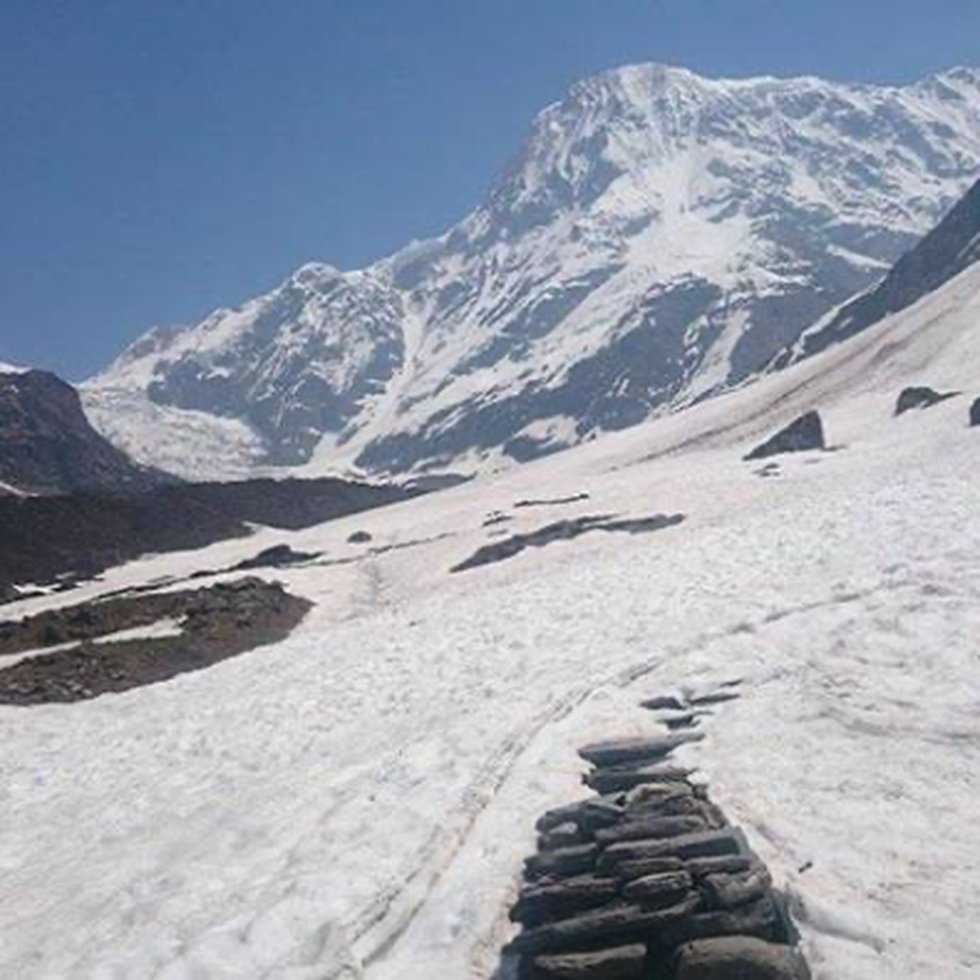
About Pindari Glacier:
- Location:
- It is located in the Bageshwar district of Uttarakhand in the Kumaon Himalayas.
- It lies on the edge of Nanda Devi (7816 meters), which is the highest peak in India.
- Zero Point of Pindari Glacier is situated at an altitude of 3660 meters above sea level.
- It is the source of the Pindari River, which meets the Alakananda River at Karnaprayag in the Garhwal district.
- On the right side of the Pindari Glacier lies the Kafani Glacier.
Other major glaciers in Uttarakhand:
- Gangotri Glacier
- Milam Glacier
- Satopanth Glacier
- Namik Glacier
What is an Avalanche?
- Avalanches are masses of snow, ice, and rocks that fall rapidly down a mountainside.
- There are various kinds of avalanches, including rock avalanches (which consist of large segments of shattered rock), ice avalanches (which typically occur in the vicinity of a glacier), and debris avalanches (which contain a variety of unconsolidated materials, such as loose stones and soil).
9. International Fund for Agriculture Development (IFAD)
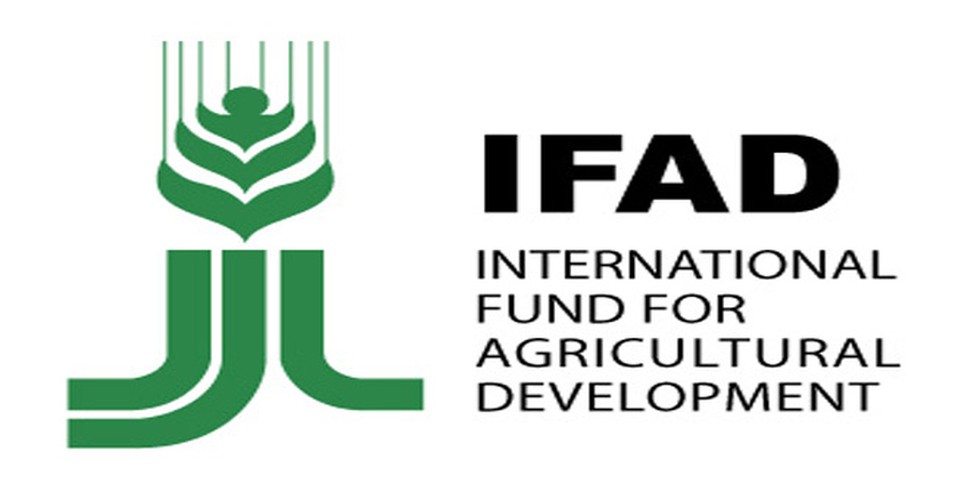
Why in News?
- The Enhanced Linkages between Private Sector and Small-Scale Producers (ELPS) initiative will be set up with an aim of strengthening developing nations’ agriculture and food systems according to the IFAD President.
About International Fund for Agriculture Development (IFAD):
- It is an international financial institution and a specialized agency of the United Nations dedicated to eradicating poverty and hunger in rural areas of developing countries.
- IFAD seeks to empower rural people to increase their food security, improve the nutrition of their families and increase their incomes through funding of grants and low-interest loans to several projects.
- Its projects and programmes are carried out in remote and environmentally fragile locations, including least-developed countries and small island developing States.
- IFAD is the only multilateral development institution that focuses exclusively on transforming rural economies and food systems.
- It is a member of the United Nations Development Group (UNDP).
- It was established as an international financial institution in 1977 through United Nations General Assembly Resolution.
- Headquarters: Rome, Italy.
- Membership: Currently, IFAD has 177 Member States, including India.
- The highest decision-making body is the Governing Council which meets every three years.
-
Enhanced Linkages between Private Sector and Small-Scale Producers (ELPS) Initiative:
- It is an initiative By IFAD in cooperation with the Ministry of Agriculture, Forestry and Fisheries of Japan.
- It aims to connect small-scale food producers and marginalised farmer groups in developing countries with larger agrifood companies to facilitate investment, capacity building and trade.
- Small-scale producers can greatly benefit from the expertise, knowledge, and technologies of the private sector.
Other Initiatives of IFAD:
- Adaptation for Smallholder Agriculture Programme (ASAP).
- Agri-Business Capital (ABC) Fund.
- Pacific Islands Rural and Agriculture Stimulus Facility.
- Platform for Agricultural Risk Management.
10. Gandhi Sagar Wildlife Sanctuary
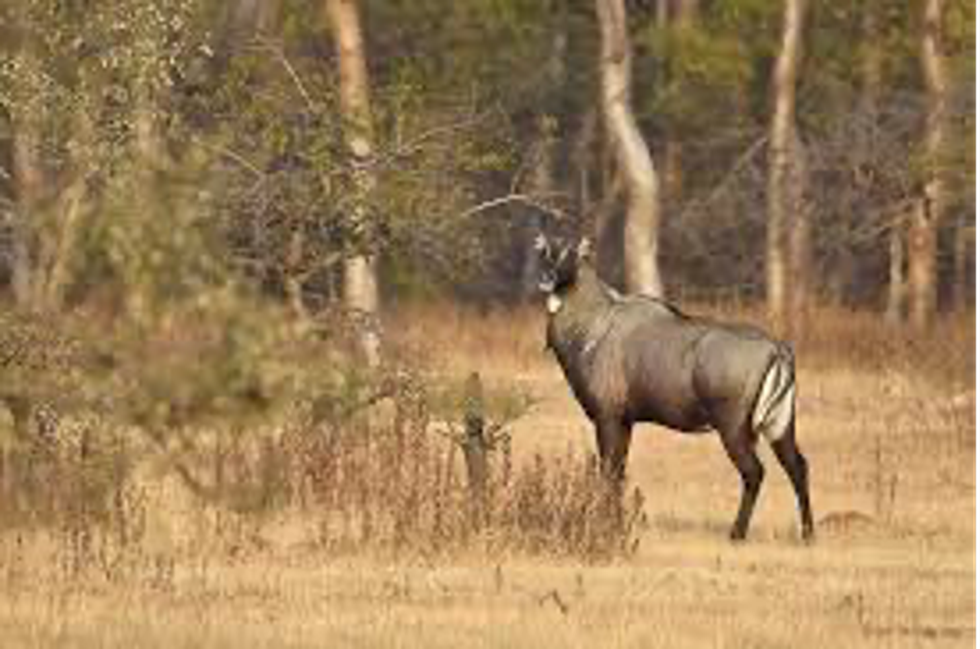
About Gandhi Sagar Wildlife Sanctuary:
- Location: It is situated in northwestern Madhya Pradesh, with one of its boundaries running along the border of Rajasthan.
- The sanctuary was notified in 1974 and is spread over an area of km.
- Landscape: A major part of the sanctuary consists of vast open landscapes with sparse vegetation and rocky terrain, with small patches of dense forests.
- River Chambal flows through the sanctuary, dividing it into two parts.
- Vegetation: Northern tropical dry deciduous forest, Northern tropical dry mixed deciduous forest and Dry deciduous scrub.
- Flora: The principal tree species found here are Khair, Salai, Kardhai, Dhawda, Tendu and Palash.
- Fauna:
- Herbivores like Chinkara, Nilgai and Spotted Deer, and carnivores like the Indian Leopard, Striped Hyena and Jackal are found in good numbers in the region.
- It also has a good population of crocodiles, fish, otters and turtles.
- The sanctuary has many places of historical, archeological and religious importance such as Chaurasigarh, Chaturbhujnath temple, Bhadkaji rock paintings, Narsinghjhar Hinglajgarh fort, Taxakeshwar temple


.jpg)
.jpg)
.jpg)
























































































































































.png)
.png)
.png)
.png)
.png)


.png)
.png)
.png)





.png)
.png)






.png)
.png)
.png)
.png)
.png)
.png)
.png)
.png)
.png)

.png)







.png)
.png)


.png)
.png)
.png)


.png)

.png)
.png)





.jpg)

.png)
.png)


.png)

.png)
.png)
.png)

.jpg)

.jpg)


.png)

.png)
.png)
.png)
.png)
.png)
.png)
.png)
.png)
.png)
.png)




.png)

.png)





.png)
.png)
.png)
.png)
.png)
.png)
.png)
.png)
.png)
.png)
.jpg)
.jpg)

.png)
.png)
.png)
.png)
.png)
.png)
.png)
.png)
.png)
.png)
.png)
.png)
.png)
.png)
.png)
.png)
.png)
.png)
.png)
.png)
.png)
.png)



.png)
.png)

.jpg)
.jpg)


.jpg)
.jpg)
.jpg)
.jpg)
.jpg)

.jpg)








.jpg)
.jpg)

















.jpg)
.jpg)







.jpg)


















.jpg)
.jpg)






























































































.jpg)
.jpg)


























.jpg)

.jpg)










.jpg)








.jpg)




.jpg)










.jpg)


















.jpg)












































.jpg)














.jpg)
.jpg)
.jpg)





.jpg)

.jpg)
.jpg)





































































.jpg)


































.jpg)
.jpg)
















































.jpg)












.jpg)


.jpg)




.jpg)
.jpg)
.jpg)

.jpg)
.jpg)
.jpg)
.jpg)

.jpg)
.jpg)
.jpg)

.jpg)
.jpg)
.jpg)
.jpg)
.jpg)
.jpg)
.jpg)
.jpg)

.jpg)


.jpg)
.jpg)
.jpg)
.jpg)
.jpg)
.jpg)
.jpg)
.jpg)
.jpg)
.jpg)











.jpg)
.jpg)





.jpg)
.jpg)
.jpg)
























.jpg)
























.jpg)









.jpg)
.jpg)







.jpg)
.jpg)









































.jpg)
.jpg)
.jpg)
.jpg)
.jpg)

.jpg)
.jpg)
.jpg)
.jpg)
.jpg)


.jpg)
.jpg)
.jpg)
.jpg)
.jpg)

.jpg)
.jpg)
.jpg)
.jpg)
.jpg)
.jpg)
.jpg)
.jpg)
.jpg)
.jpg)
.png)

.png)
.png)

.png)
.png)
.png)
.png)


.jpg)
.jpg)

.jpg)
.jpg)
.jpg)

.png)
.png)
.png)
.png)
.png)
.png)
.png)

.png)
.png)
.png)
.png)
.png)
.png)
.png)
.png)
.png)
.png)





































































-min.png)



.png)




.png)








































